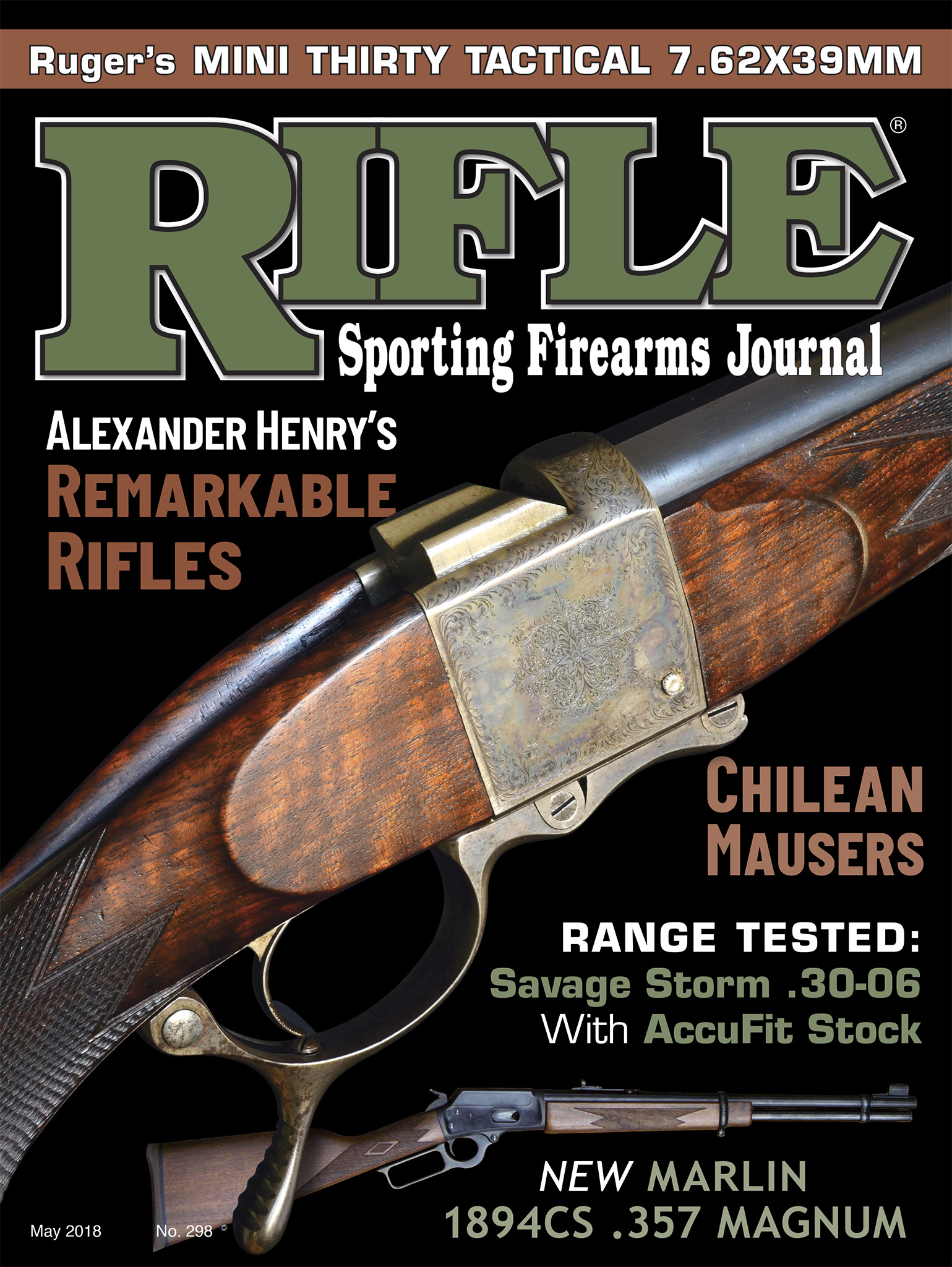Cleaning and Breaking-In Barrels
Sometimes less is actually more.
feature By: John Barsness | May, 18
Fifty years ago the standard cleaning technique for hunting rifles was to screw the correct brush on a cleaning rod, dip the brush in bore cleaner then stroke the bore 15 to 20 times. Brushing was followed by cotton patches until one came out clean, supposedly indicating the bore was clean. This procedure primarily removed powder fouling, since it sure didn’t remove much of the copper fouling considered so evil today.
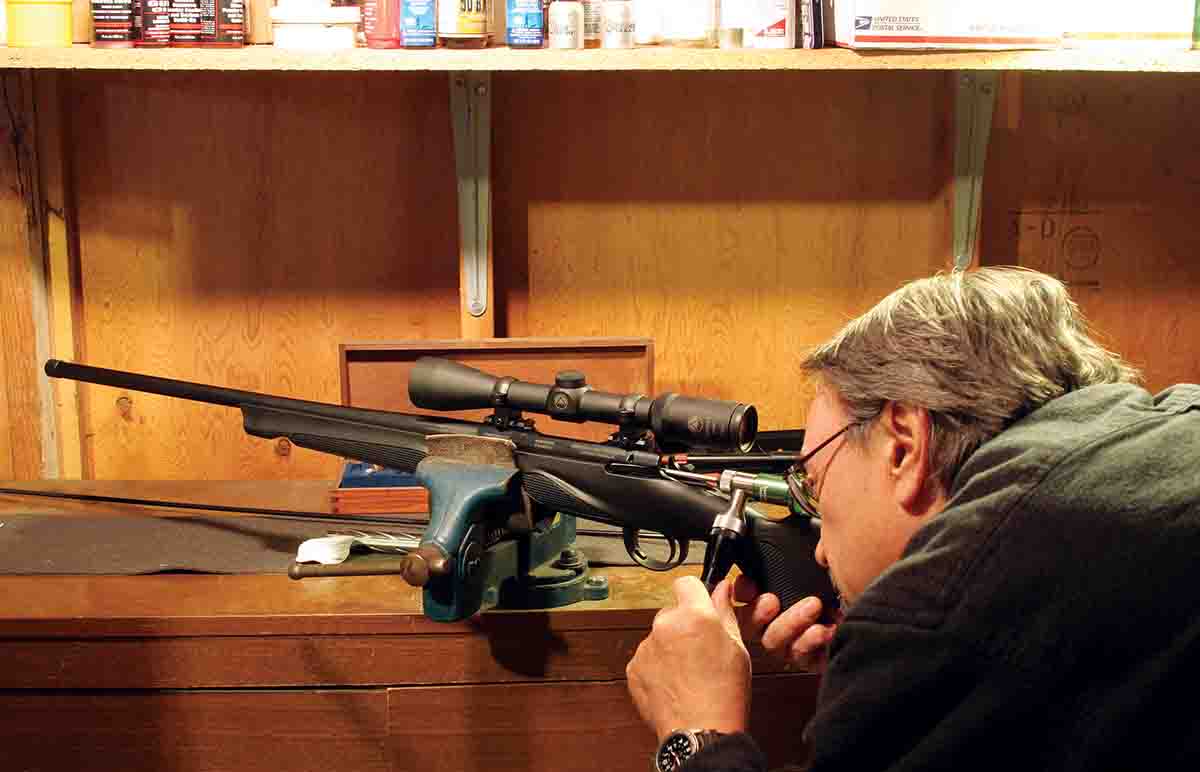
Older target shooters were aware of copper fouling, partly due to the heavy-fouling, cupro-nickel jackets used early in the twentieth century. However, many younger target shooters (including Elmer Keith, one of the most influential gun writers of the mid-twentieth century) didn’t consider copper important. Keith said he had never noticed “copper wash” affecting accuracy.
Bore cleaning started to change in the 1970s thanks to the popularity of benchrest shooting that started before World War II among woodchuck shooters in the northeastern U.S. The sport became far more popular after the war, due to many ex-soldiers who had found they enjoyed shooting, and influential gun writers like Townsend Whelen and Warren Page.
Benchrest shooting affected many aspects of rifles, including how shooters clean barrels. In their search for smaller groups, benchresters discovered “copper wash” did affect accuracy (if only in fractions of an inch) in heavy smallbore rifles equipped with high-magnification scopes.
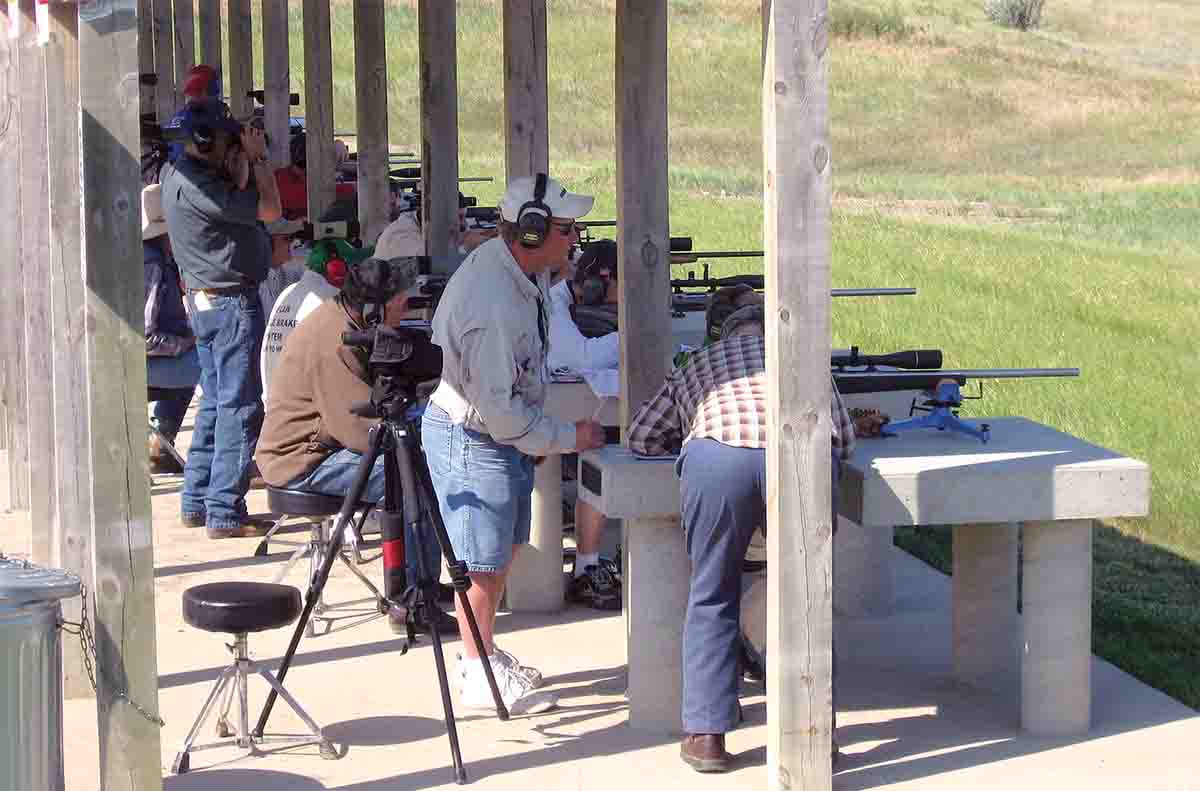
Articles and books started advising hunters to clean their barrels far more often, and one handloading manual published in the mid-1970s even listed the best “cleaning interval” for each cartridge. Mostly it was 15 to 20 rounds, but for “match accuracy” in the .221 Fireball, the manual suggested 10 rounds. Prairie dog shooters started cleaning in the field after each box of ammunition – or felt guilty if they didn’t. Of course, I was among these cleaning addicts, starting a log of the number of rounds fired in each of my rifles partly to make sure each barrel got scrubbed every 20 rounds or so.
In the 1980s I became acquainted with more shooters who used custom barrels, and gunsmiths who installed them. Some said “good” barrels didn’t have to be cleaned nearly as often because their smoother bores didn’t foul much. I decided to quit cleaning my rifles as often to see what happened. Among the first subjects was a Ruger 77 .30-06 acquired in the early 1980s as my lone big-game rifle, after a divorce wiped out my pair of previous hunting rifles. The .30-06 grouped three shots under an inch at 100 yards with its primary handload, even after deliberately increasing the cleaning interval up to 50 rounds.
My rifle collection increased pretty rapidly after that, including a heavy-barreled Remington 700 .223 Remington I “accurized” myself. This improved five-shot groups from .75 inch to .25 inch with its best handload; Nosler 50-grain Ballistic Tips with the then-new Ramshot TAC. Unlike most spherical powders, TAC was very clean burning. Even today, thousands of rounds later, the rifle still averages groups of under half an inch.
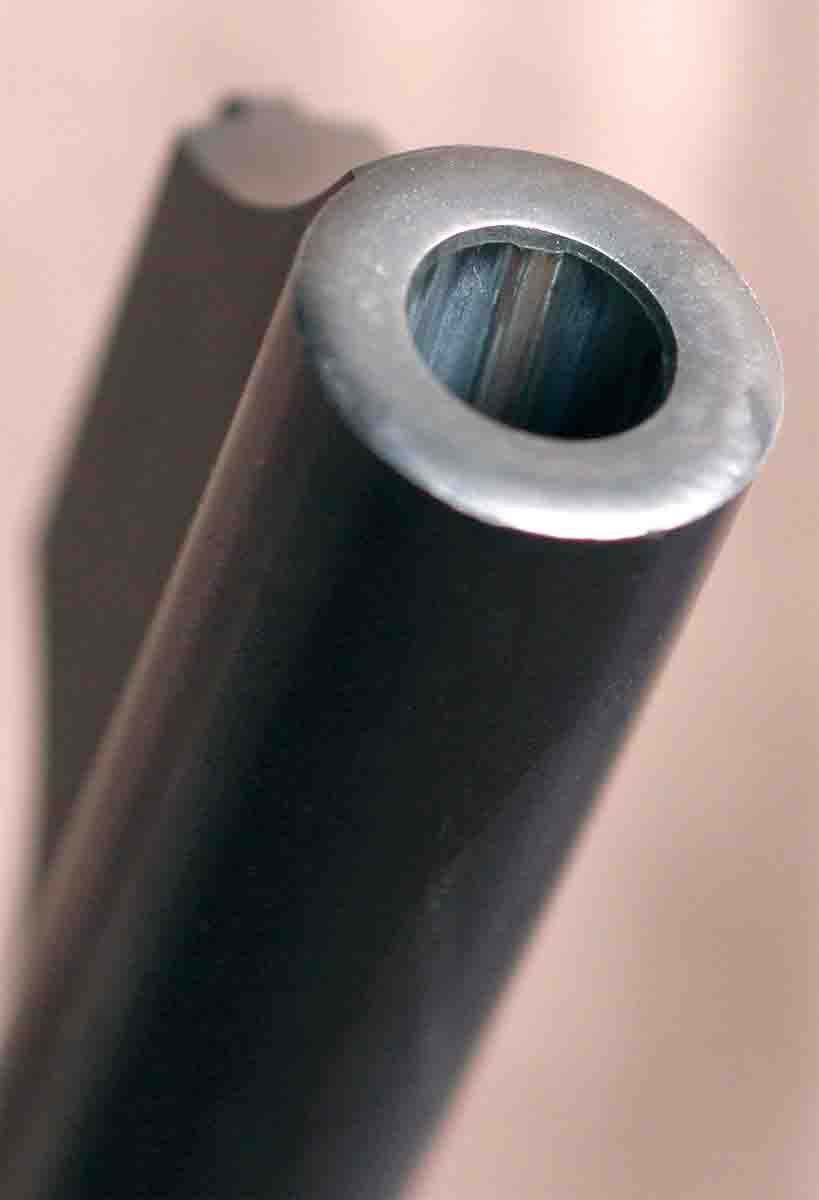
Like the .30-06, groups from the .223 didn’t grow when the barrel wasn’t cleaned for 50 rounds – sometimes even longer during prairie dog shoots. Eventually I dared to fire 500 rounds without cleaning. The rifle kept shooting tiny clusters, and the bore acquired only a faint hint of copper wash. By then I had purchased a Hawkeye borescope, so I wasn’t judging the copper level just by looking at the muzzle.
Around this time another benchrest-inspired technique appeared. Some competitors noticed their rifles grouped more accurately (again, in tiny fractions of an inch) after being shot and cleaned repeatedly. Some of these shooters also used borescopes to track fouling and discovered that after barrels were “broken in,” copper fouling was reduced.
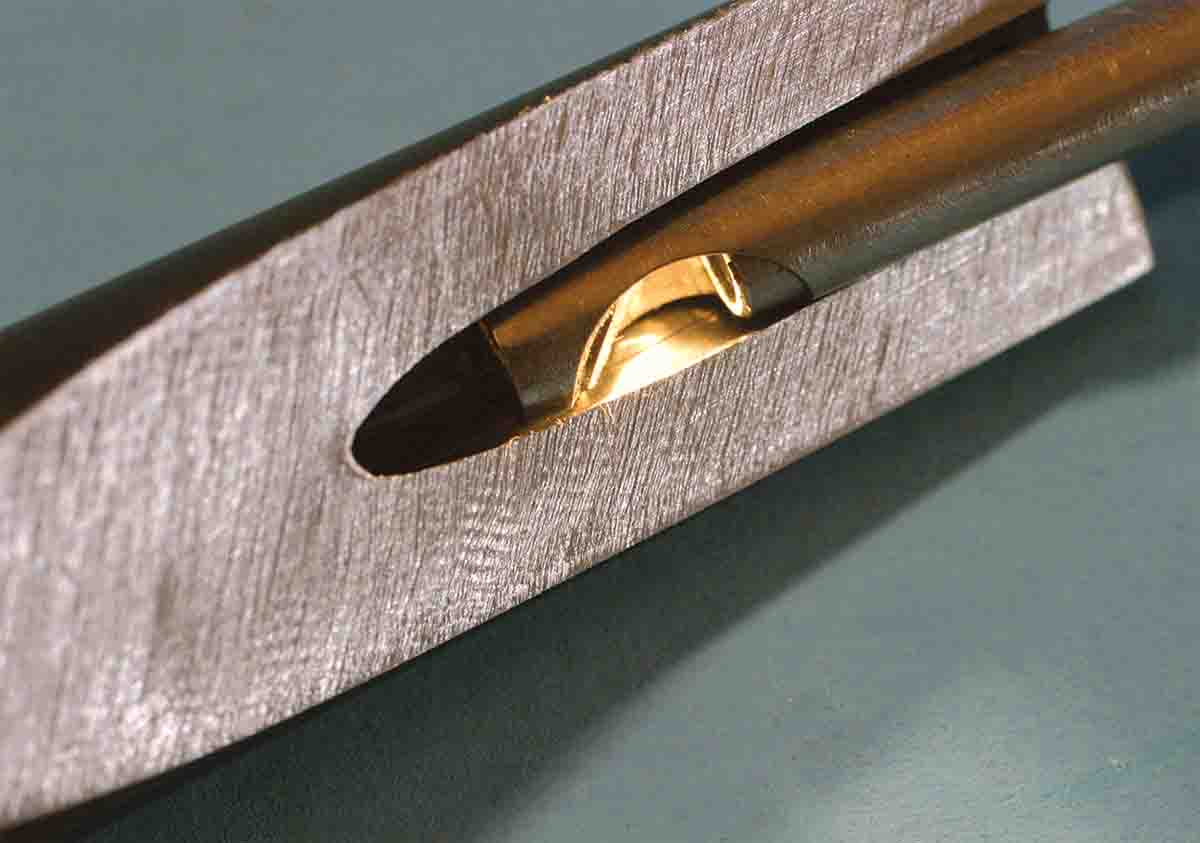
Soon even hunters were breaking-in the barrels on their new deer rifles. Many claimed a “properly” broken-in factory barrel fouled far less, though of course they still cleaned them every 20 rounds or so. I started experimenting with break-in techniques too, helped considerably by my Hawkeye. This hands-on and borescope-forward research continues, and over the decades I have reached some conclusions.
First, rifle barrels are unique, varying considerably in the smoothness of their bores and how quickly they foul, so there’s no way to suggest a definite cleaning interval. Also, a single cleaning product doesn’t work equally well with all barrels, or (I suspect) in all climates, probably because of different humidity levels.
Second, too many shooters obsess about copper fouling. After starting to record the cleaning intervals in my rifle barrels, I discovered many factory barrels would go 50 to more than 100 rounds without any drop-off in accuracy, despite visible copper fouling inside the muzzle, not just through the Hawkeye. After cleaning, many barrels also grouped worse until the bore picked up some copper again.
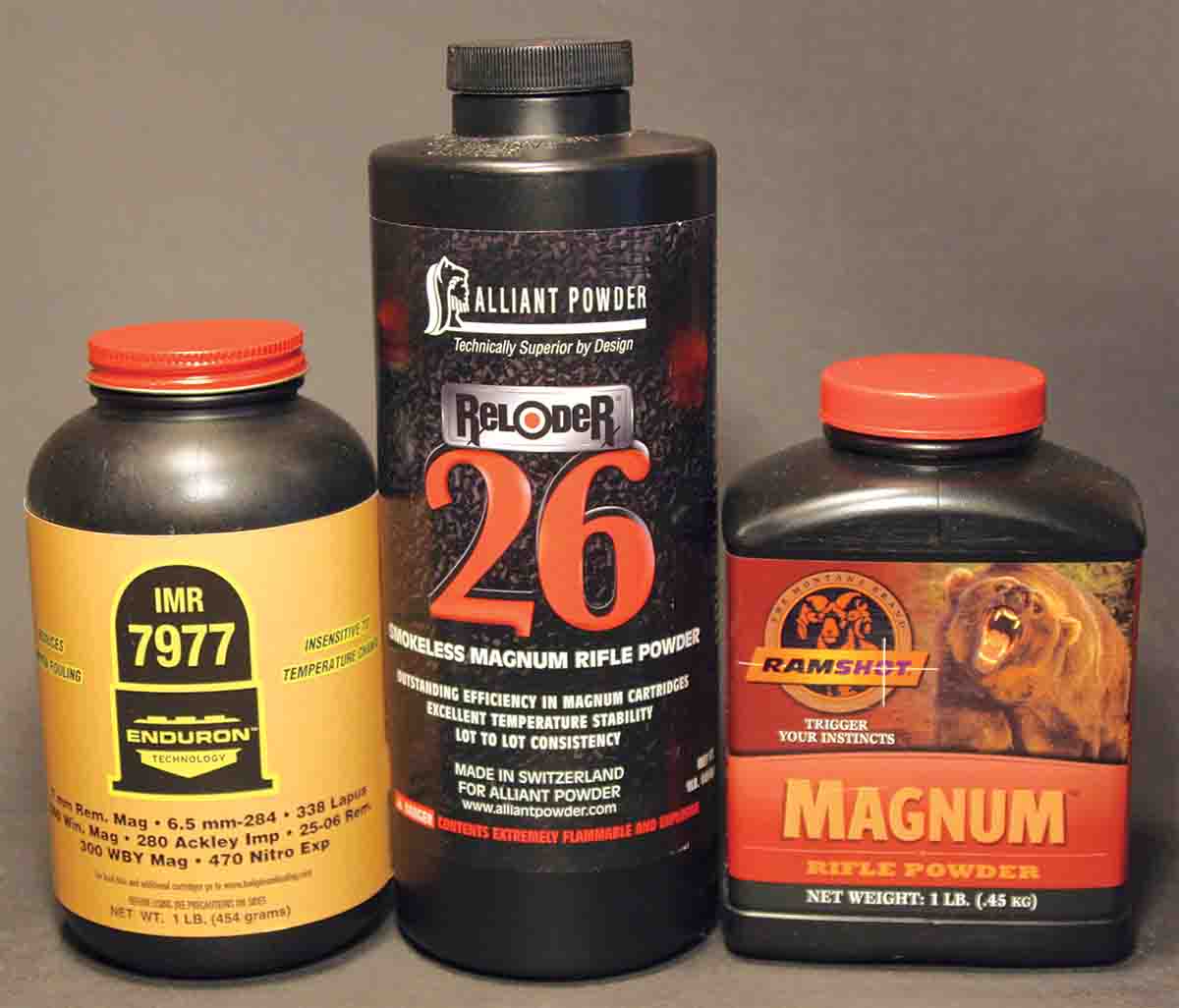
Two barrels have never fouled enough to affect accuracy. Oddly enough, both are factory barrels. One is on that Remington 700 .223, and the other is on a CZ 452 .17 Hornady Magnum Rimfire (HMR).
Many shooters believe rimfire barrels never require cleaning, which isn’t true, but the .17 HMR is more like a centerfire, obtaining velocities over 2,500 fps with centerfire-type bullets. This rifle shot very well when brand-new in 2003, with five-shot groups averaging .5 to .75 inch depending on the ammunition, and despite plenty of shooting since, the little rifle still shoots the same way. It has been cleaned twice.
I dutifully scrubbed the bore after the first 448 shots, mostly to see what might happen, whereupon a five-shot group spanned almost 2 inches. Accuracy settled down again after that, but I cleaned the bore again 135 rounds later to see if the same thing would happen. It did, and it’s now been over a decade since that second cleaning. The last five-shot group, fired in a mild breeze to check the scope’s zero in June 2017, measured .75 inch.
As a result of all this, after acquiring a rifle and establishing its accuracy, I don’t clean the bore until groups start to open up. This normally doesn’t happen until at least 50 rounds, and 75 to 100 rounds is more common. After that it’s cleaned at the same basic interval.
There are three basic kinds of copper cleaners: “Lifters” work their way under copper, detaching it from the bore; “scrubbers” are mild abrasives that rub the copper out; “solvents” dissolve copper and are usually (but not always) ammonia-based products.
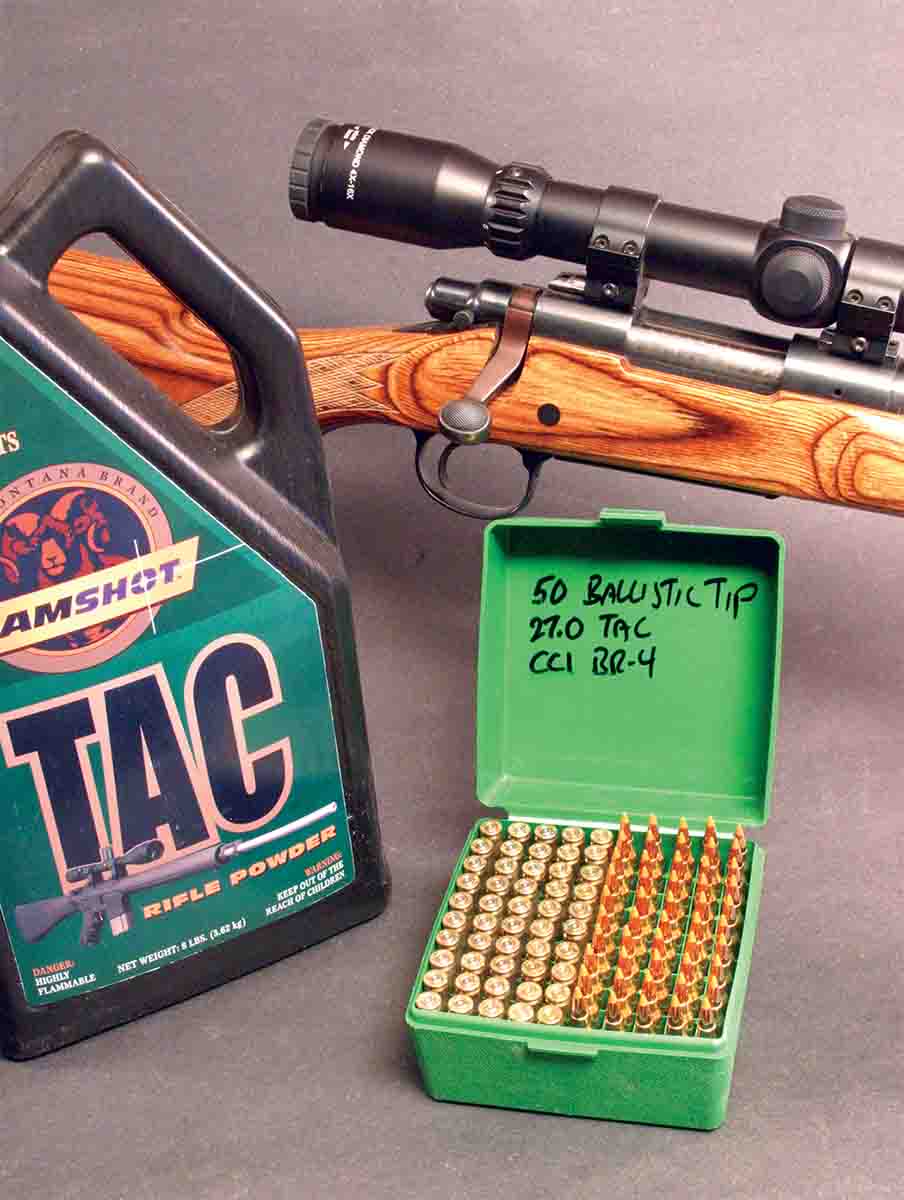
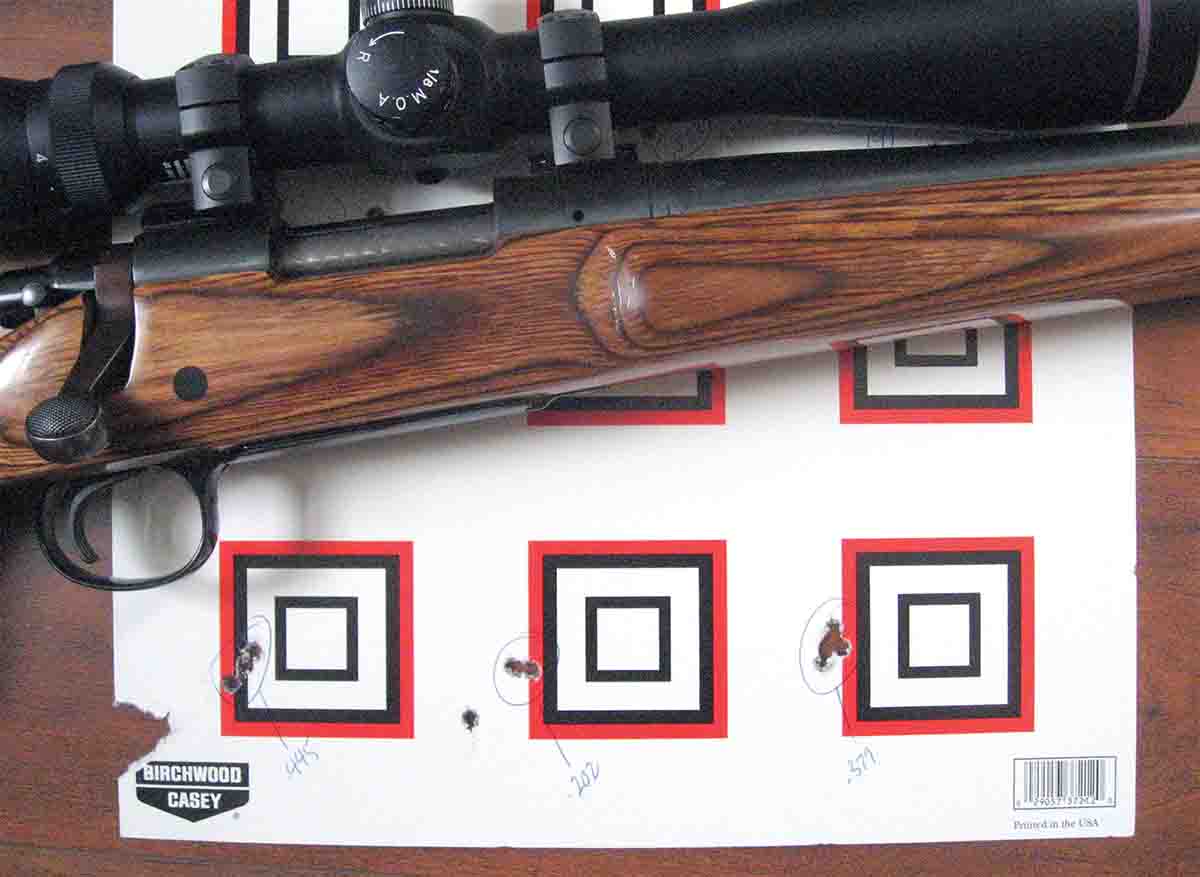
In my experience, lifters consistently work well only on bores that don’t foul much, like the typical hand-lapped barrels found on benchrest rifles – one reason many benchrest shooters clean with lifters. This includes my benchrest rifle, a 6mm PPC built by local gunsmith Arnold Erhardt.
Solvents can vary considerably. Traditional solvents consist mostly of ammonia and water, and while they remove copper quickly, you have to run another patch through the bore every 15 minutes, at most. Otherwise the ammonia oxidizes and can etch or even pit the bore, not only increasing copper-fouling but possibly increasing throat erosion. (Most barrel erosion is caused by hot powder gas, and any imperfection in the bore causes hot gas to circulate a little longer in that spot.)
These days, many ammonia solvents are oil based, preventing oxidation. They can be left in the bore indefinitely, and continue working for far longer than 15 minutes. I dislike cleaning rifles so unless the copper needs to come out quickly, I usually swab some oil-based solvent in the bore and leave it there for a few hours or even days, after which most or all of the copper is gone.
If the bore is so coppered that even strong solvents don’t make much of a dent (not unusual in used rifles), J-B Compound is used to scrub it out. Wrapping a couple of cotton patches around a bore brush of the right size, then slathering J-B over the cotton, will normally remove almost all copper with 20 back-and-forth strokes.
However, this can be overdone. Believe it or not, bores that are too smooth often copper-foul even more than rough bores. The reason: Custom hand-lapped barrels are normally smoothed with fine grit rather than being truly polished. Instead of the bullet making full contact with the bore, it tends to ride on top of the tiny, lengthwise striations made by the lapping compound.
My first experience with a too-smooth bore occurred after buying a lightly-used Sako .338 Winchester Magnum factory barrel at a gun show, then having a local gunsmith fit it to a commercial FN Mauser action. The barrel fouled considerably but shot very well when cleaned, then didn’t as it fouled. Back then I used a lot more J-B Compound than nowadays, so scrubbed it out when groups opened up.
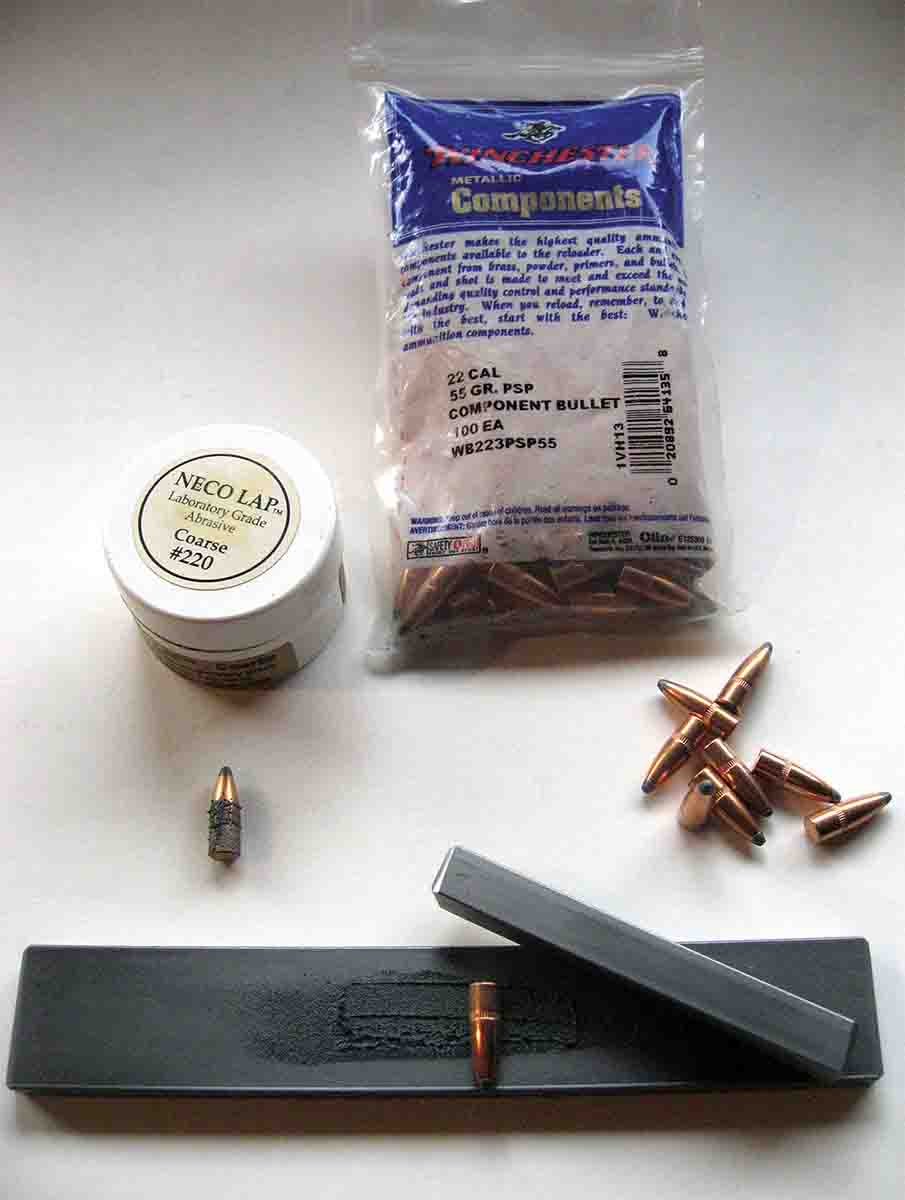
Among them was a bore coat that supposedly reduced copper fouling by at least 80 percent and made cleaning far easier. I tried an early version in the .338, and it worked. The rifle shot the same small groups for around 75 to 80 rounds, and even then groups only grew a little because only light traces of copper appeared in the bore – and just about any copper solvent removed them quickly.
Other products designed to reduce bore fouling have been tested, but so far DYNA-TEK Bore Coat has worked better than any and lasts for the life of the bore. (Let me add that J-B Compound is a great product, but these days I use it sparingly, most often when super-cleaning a bore prior to installing Bore Coat.)
Experiments have also been conducted with the one-shot-clean break-in method. Like cleaning every 20 rounds, the primary problem is the technique was also designed around hand-lapped benchrest barrels.
The reason for breaking-in a benchrest barrel has nothing to do with the bore’s quality, because lapping removed any machining imperfections. Instead, the one-shot-clean technique polishes the tiny reaming rings in the chamber throat put there when a top-notch gunsmith chambered the barrel. This is why most new custom barrels primarily copper-foul just in front of the throat – if they foul at all.
This slight polishing occurs each time a bullet passes over these tiny marks – the reason for super-cleaning the bore between each shot. If the throat is fouled with copper at all, the bullet polishes the copper instead.
However, hunters don’t need to quickly break-in the barrel of a deer or even varmint rifle because they’re not going to use it in Saturday’s benchrest match. They can accomplish the same thing by cleaning the bore after each of the rifle’s several range sessions, because the first round of each session will polish the throat.
One-shot cleaning also doesn’t do much good for rougher barrels with noticeable machining marks in the bore itself. It also doesn’t do any good to shoot one shot, run a bore brush through the barrel furiously a couple dozen times, then fire another shot, as I’ve seen more than one shooter do at my local range; brushing doesn’t remove enough copper.
There are less expensive and time-consuming ways to smooth reamer marks in the throat of a new custom barrel. Two top riflesmiths I know (one a benchrest specialist) suggested attaching a bore brush to the first section of a take-down cleaning rod, then wrapping the brush with #0000 steel wool. The rod can then be fitted into a drill motor and the throat “power brushed” for a few seconds.
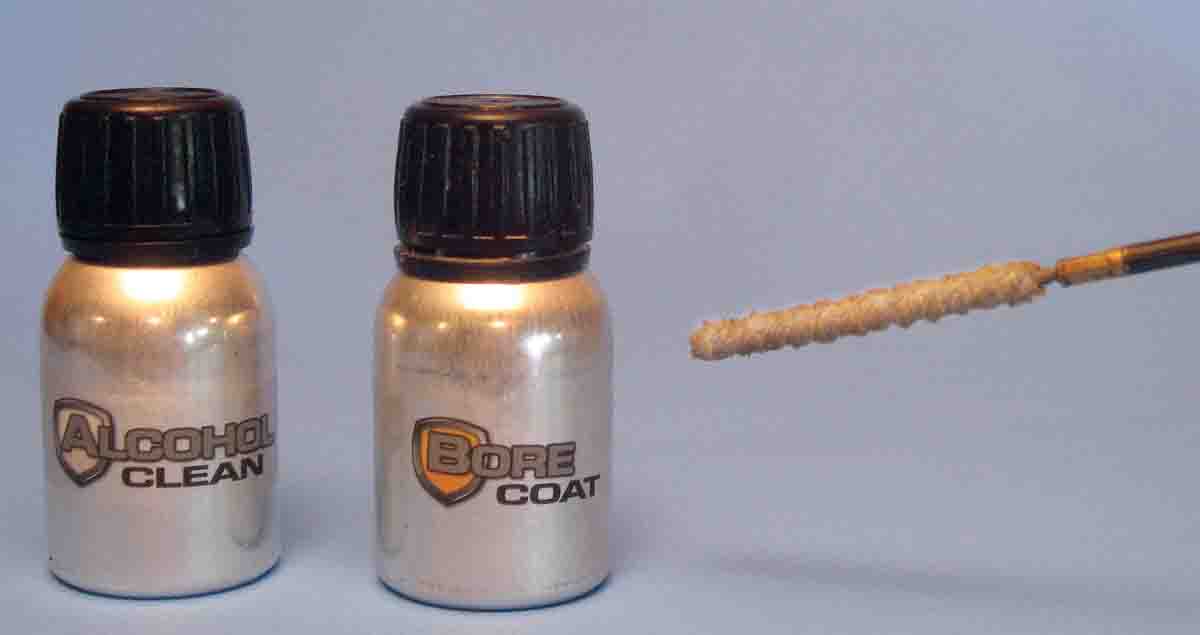
“Fire-lapping” with a few abrasive-coated bullets also works. I don’t do this with hand-lapped barrels, but it can sure smooth-up throats (including somewhat eroded throats in unlapped barrels), along with some of the bore. However, too many fire-lapping shots can enlarge a throat too much, both in length and width, for the best accuracy.
The bores of many twenty- first-century factory barrels have almost as few machining marks as hand-lapped custom barrels, particularly the increasing number of hammer-forged barrels, and modern handloading powders can also reduce fouling. Many recent spherical powders burn much cleaner, reducing copper fouling by reducing abrasive powder fouling, and many new powders also include decoppering agents. These have been around over a century, though mostly in military powders. Apparently most powder manufacturers felt civilians could clean out their own copper, but eventually realized some handloaders would pay a little more for powders that helped clean their rifles, especially those who prefer shooting to cleaning. I’m one, and you might be too.


